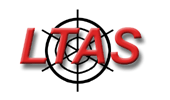Life Table Analysis System

Thank you for choosing LTAS.NET and being one of the users from over 75 countries around the world. We hope you will find helpful information here to get started easily with LTAS.NET.
The newest LTAS.NET version 4.0 for Windows is now available
The current version of LTAS.NET is Version 4.0. Before you download and begin using this new version please visit the Documentation page to find supporting information, Including
- Major Changes in LTAS.NET version 4.0
- User Manual [PDF 4963 KB, 103 pages]
- Frequently Asked Questions
As you prepare to download you will be asked to register so we can send you a notice of updates. Even if you have registered before we ask that you please do so again so we can have current information for you.
While extensive testing on LTAS.NET has been conducted, not all possible variations have been evaluated. If you discover a problem or issue please bring it to our attention at the Contact LTAS Staff page.
LTAS.NET
Life table analyses originated as a form of survival analysis in which survival times are grouped into intervals. Hazard or incidence rates are calculated for each interval. Intervals might be constructed by age, calendar time, duration of exposure, or level of exposure (for example, ppm). Rates for the cohort under observation might then be compared with external rates for some large (typically unexposed) population to obtain an estimate of the relative survival of the cohort compared with the external population.
The NIOSH Life Table Analysis System was created primarily to analyze cohorts defined by occupational exposures. It therefore requires input of a work history file in addition to a demographic and outcome file. LTAS constructs rates by age, sex, race (usually white/other-race), calendar time, and duration or level of exposure. LTAS then compares the observed rates for the cohort under study with comparison rates from a referent population; rates for several referent populations are supplied with LTAS. Rates are calculated as observed events, typically deaths, divided by person-time at risk in the interval.
The Life Table Analysis System (LTAS) was developed at the National Institute for Occupational Safety and Health (NIOSH) during the 1970s. Originally, LTAS was available only on IBM mainframe computer systems. During the 1990s LTAS was made available in a PC-DOS version called PC-LTAS. The current version of LTAS, called LTAS.NET, has been developed for use on the following Windows platforms: Windows 7 SP1/8/8.1/10 64-bit (32-bit version is not supported). This version of LTAS is more interactive than the previous mainframe or MS-DOS versions and provides greater flexibility for data input, export and analysis. It also corrects several issues in the previous versions of LTAS.NET, offers better Windows compatibility and security, and improves reports and data export capabilities.
- Page last reviewed: October 17, 2013
- Page last updated: April 18, 2016
- Content source:
- National Institute for Occupational Safety and Health Division of Surveillance, Hazard Evaluations and Field Studies


 ShareCompartir
ShareCompartir